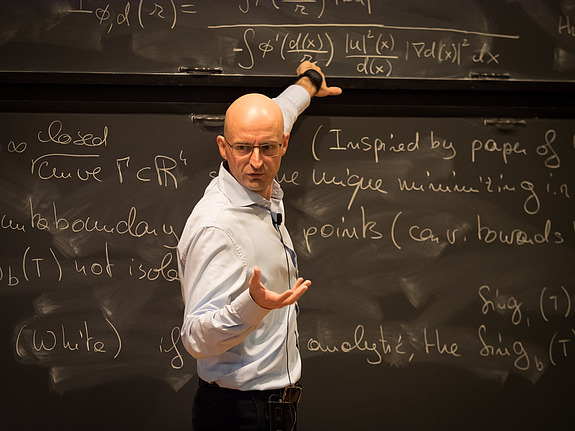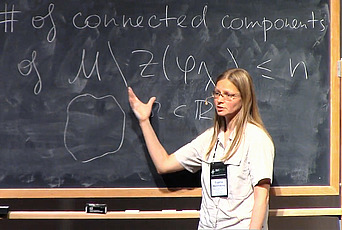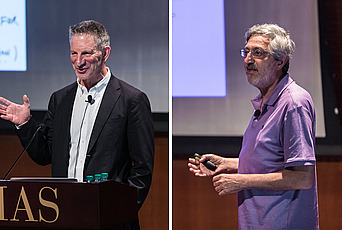Curiosities: Partial Differential Equations

A variety of systems in natural sciences are described through physically measurable quantities that depend on “independent variables.” For instance, we routinely measure the pressure and the temperature of the air in the Earth’s atmosphere, and such measurements depend upon the time and the location of the device used. Several fundamental laws discovered by scientists through the last three centuries give relations among the rates of change of such physical quantities. The resulting mathematical objects, called partial differential equations, are therefore ubiquitous in modern science and engineering: they are efficiently used to model a variety of different phenomena, like the flow of air past the wings of an airplane, the collapsing of a star into a black hole, or the spreading of a pollutant in the air.
The theoretical study of partial differential equations is a branch of pure mathematics that dates back to the dawn of modern sciences, originating in the works of Bernoulli, Fermat, Newton, Lagrange, Euler, and several others. Central theoretical questions are the existence of solutions, how they behave, what we need to know to determine them, and whether they break down, for instance, when they get in a range where the validity of the equations can be challenged. The latter phenomenon is usually called singularity formation. Such questions, especially the formation of singularities and their descriptions, are the main subjects of my research. The two topics in which I have spent most of my recent efforts are the calculus of variations and the equations of incompressible fluid dynamics.
In the calculus of variations, one seeks the solution of a minimum problem, for instance a shape that optimizes a certain feature. A prominent example is named after the Belgian nineteenth-century physicist Joseph Plateau, who proposed to study area-minimizing surfaces, namely surfaces which minimize their area among those which span a fixed contour. It is long known that such surfaces might have singularities, for instance, the formation of certain type of corners, but a complete description of the type and size of singularities is a long-standing open problem. I have shown with my collaborators that surprisingly many singularities can occur at the junction between an area-minimizing surface and its contour, even when the latter is quite simple and smooth. However, our work also gives the first proven theoretical limitation to the size of the singularities without any special geometric assumption on the contour. When the contour is a real analytic curve, a conjecture by White asserts that in fact there can be only finitely many singularities. A recent preprint authored by IAS Member Zihui Zhao and me gives a first step in that direction.
The first system of partial differential equations ever written down in fluid dynamics is given by the Euler equations, found by Leonhard Euler more than 250 years ago. The incompressible Euler equations are in fact a limiting case of another well-known system, the Navier-Stokes equations.
Whether regular solutions of the Euler and Navier-Stokes equations might form singularities in finite time is one of the biggest open problems in mathematics: for the Navier-Stokes equations, it is one of the famous millennium prize problems. In the last decade, I have shown with László Székelyhidi, Jr., that there are very irregular solutions, many more than expected, and that they might behave in a very surprising way. Our new approach borrows from the pioneering work of John Nash of the 1950s on the isometric embedding problem, a thus far completely unrelated topic in differential geometry, another branch of mathematics. My ideas with László are at the base of recent important developments, such as the resolution by Phil Isett of a 1949 fundamental conjecture of Lars Onsager (Nobel Prize winner in chemistry) in the theory of turbulent flows, and the unexpected discovery by Tristan Buckmaster and Vlad Vicol that irregular solutions of the Navier-Stokes system are not uniquely determined by the equations.


